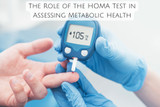What Is Reverse Dieting and Can It Help Lose Weight?
Do you ever wish you could eat more without gaining any weight? Do you ever wish you could achieve a calorie deficit without having to starve? Then reverse dieting is for you. In this article, we will break down to you about what reverse dieting is and how it works.
What is reverse dieting?
Reverse dieting encourages a small surplus to help in restoring circulating hormone levels while trying to match energy consumption to the recovering metabolic rate, reducing fat accretion.
Reverse dieting is not like other diets that focus on changing physical appearance. Reverse dieting focuses on boosting metabolism. When you are reverse dieting, you are slowly increasing the calories while reducing the amount of fat you gain to boost your metabolic rate.
How Does Reverse Dieting Work?
Before talking about how reverse dieting works, let us talk about how weight gain and weight loss work. Your BMR, i.e., your basal metabolic rate, is the number of calories you need to burn to exist. You could be lying on a bed all day without even moving, and it will still need calories. Basic human functions like breathing, walking, blinking also need the energy to function, and your BMR is what accounts for this.
Let's talk about TDEE. TDEE is your total daily energy exposure and refers to the number of calories burned while you perform your normal day-to-day activities. It is also known as maintenance calories. This means the number of calories that you need to intake to maintain your current weight.
Now, to lose your weight, you are required to follow the calories out and calories in the formula. That means you have to intake fewer calories than you burn and be in a calorie deficit program. However, it is easier said than done.
Rather than starving yourself and eating very few calories, you can go for reverse dieting. It helps in restoring metabolism and increases your maintenance of calories so you can eat more.
Who Should Go for Reverse Dieting?
Reverse dieting is beneficial for people who have been restricted in calories, are trying to lose weight but can stick to their calorie deficit program, or have done aggressive dieting in the past. On a reverse diet, you will be able to increase your calories, and when you decide to cut calories, you won't be cutting calories at such low numbers. If you are a foodie and want more freedom with calories, reverse dieting is the best option for you. This means you will have more calories to play around and more energy.
How to Start Reverse Dieting?
Reverse dieting requires some macro and calorie counting, so it is better if you keep track of them. You will most likely gain some weight on reverse dieting as you are consuming many calories but keep in mind that you are setting yourself up for a long term success. A part of this long term success includes developing healthy habits such as yoga or working out.
Follow the below steps to start reverse dieting:
Step 1: Calculate the calories.
Before starting your diet, calculate the maintenance calories and your macronutrient targets, you need to achieve to maintain your current weight. Remember, your macros are your fats, carbohydrates, and proteins.
There are plenty of apps and online calculators available to help you with this. All you require for this step is to fill the info such as your age, sex, weight, activity level, and more in your calculator.
Step 2: Set and identify your goal
Decide how quickly you want to increase the calorie intake. Many people gain weight during reverse dieting, but once you cross your TDEE or maintenance calories, weight gain is inevitable. You can make strategies on how to cut down the amount of fat and gain muscle weight instead. 
Remember that the faster or sooner you increase your calorie intake per week, the higher your chances of gaining more fat. If you have no problem with gaining some extra fat so that you can increase calorie intake faster, go for it. You can also limit the amount of fat you might gain and take the slow and steady rate if you wish.
Step 3: Add calories
Now that your goal and timeline is clear, you can start by slowly adding calories to your carbohydrates and fats a week. In case you have chosen the more conservative route, then a 5 percent increase to your fats and carbohydrates is a good start. You can also choose to go a little higher if you want to reach your goal faster.
Step 4: Always track your progress
It is essential that you track your progress so you can keep a room for adjustments if needed accordingly. If you feel like you are gaining weight a little too fast than expected, then you can either cut down your macros for the next week or take it back a notch. If you are ok with your progress, you can also bump them up.
Step 5: Know when to stop.
When you need to stop entirely depends on your progress and goals. Most people usually tend to stop when they have reached their calorie goals and are satisfied with their progress. So, if you are currently at 1,500 calories and your goal is 2,500 calories, keep going until you reach your goal. 
It is important to acknowledge that this diet is not about losing weight or bulking up but about boosting your metabolic rate for long-term success. This might seem like a difficult process to prepare yourself to gain some fat during the process, but you can always cut it down after reverse dieting. Another good way to increase your metabolic rate is through exercise.
Recent Posts
-
The Science Behind Boswellia Extract: How It Works in the Body
Boswellia serrata, also known as frankincense, is a resin obtained from the Boswellia tree that has
-
The Role of Un-Natured Protein in Enhancing Detoxification
While the human body is well-equipped with a detoxification system—primarily managed by the liver, k
-
The Role of the HOMA Test in Assessing Metabolic Health
In today’s fast-paced world, where health conditions such as Type 2 diabetes, obesity, and metabolic





